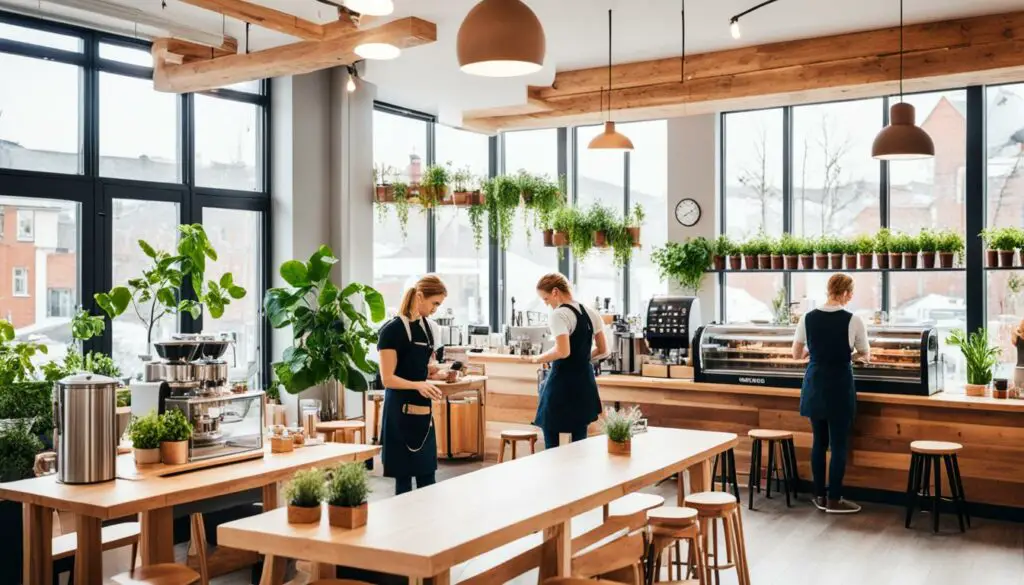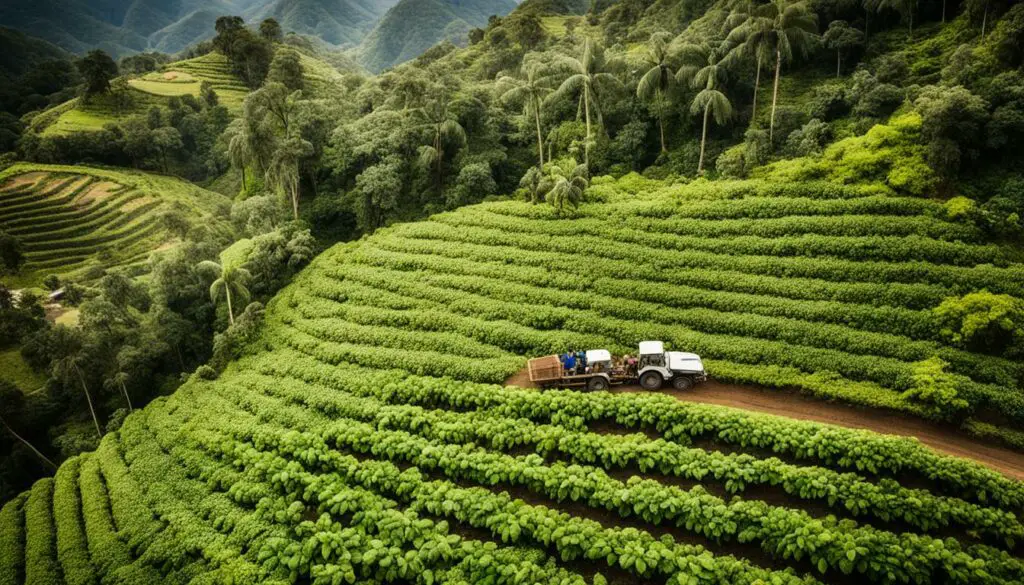When it comes to enjoying a good cup of coffee, one of the most important factors to consider is the size of the cup. While a small or large cup may not seem like a big deal, it can greatly affect the taste and overall experience of your coffee.
In the United States, coffee cup sizes are measured in ounces, but in many other countries, they are measured in milliliters. This can cause confusion when traveling or ordering coffee in different parts of the world.
In this article, we will explore the differences between US coffee cup sizes and those used elsewhere.
Understanding US Coffee Cup Sizes
The standard coffee cup size in the United States is 8 ounces. This is equal to approximately 237 milliliters.
However, many coffee shops offer larger sizes, such as 12 ounces, 16 ounces, and 20 ounces. These larger sizes are sometimes referred to as “small,” “medium,” and “large” respectively.

In addition to these standard sizes, many coffee shops offer specialty sizes, such as a “venti” cup, which is 20 ounces, or a “trenta” cup, which is 30 ounces. These sizes are exclusive to specific coffee chains, such as Starbucks.
The Importance of US Cup Sizes
When it comes to making coffee, the size of the cup can greatly affect the flavor and overall experience. A smaller cup will have a stronger flavor and a stronger aroma, while a larger cup may have a more diluted flavor. This is because the ratio of coffee to water is different in each cup size.
It is also important to note that the size of the cup can affect the amount of caffeine you consume. A smaller cup will have a higher concentration of caffeine, while a larger cup will have a lower concentration. This is something to keep in mind if you are sensitive to caffeine or are trying to limit your intake.
Popular US Coffee Cup Sizes
When it comes to ordering coffee in the United States, the most popular cup sizes are 12 ounces and 16 ounces. These sizes are considered to be a good balance between flavor and convenience, as they are large enough to provide a good taste, but not so large that they become cumbersome to carry.
Many coffee shops also offer a “to-go” size, which is typically 12 ounces, and is designed for customers who are on the go and need their coffee quickly.
Understanding Coffee Cup Sizes Elsewhere
In many other countries, coffee cup sizes are measured in milliliters, rather than ounces. This can cause confusion for travelers or those who are used to the US standard.
For example, in Europe, a small coffee is typically around 50 milliliters, while a large coffee is around 150 milliliters. In Australia, a standard coffee cup size is around 250 milliliters. These sizes can vary from country to country, so it is important to know the standard sizes when ordering coffee in a foreign country.
The Importance of Cup Sizes Elsewhere
Just like in the United States, the size of the coffee cup can greatly affect the flavor and overall experience. A smaller cup will have a stronger flavor and aroma, while a larger cup may have a more diluted flavor. It is important to understand the standard cup sizes in a foreign country so that you can choose the right size to suit your preferences.
Popular Coffee Cup Sizes Elsewhere
In Europe, the most popular coffee cup sizes are around 50 milliliters and 150 milliliters. These sizes are considered to be a good balance between flavor and convenience, and are commonly used in cafes and coffee shops.
In Australia, the standard coffee cup size is around 250 milliliters, which is similar to a medium size in the United States. This size is considered to be the most popular and widely used in Australia.
Frequently Asked Questions:
What is the standard coffee cup size in the US?
The standard coffee cup size in the US is 8 ounces, which is equal to approximately 237 milliliters.
How does the size of the coffee cup affect the flavor?
The size of the coffee cup affects the flavor by changing the ratio of coffee to water. A smaller cup will have a stronger flavor and aroma, while a larger cup may have a more diluted flavor.
Is there a standard coffee cup size in other countries?
The standard coffee cup size varies from country to country. In Europe, a small coffee is typically around 50 milliliters, while a large coffee is around 150 milliliters. In Australia, the standard coffee cup size is around 250 milliliters.
Conclusion
Coffee cup sizes play a crucial role in the overall taste and experience of your coffee. Understanding the differences between US coffee cup sizes and those used elsewhere is important when traveling or ordering coffee in different parts of the world. Whether you prefer a strong, flavorful coffee or a more diluted cup, it is important to know the standard sizes in order to choose the right size to suit your preferences. So, the next time you order a cup of coffee, remember the differences between Coffee Cup Sizes.













